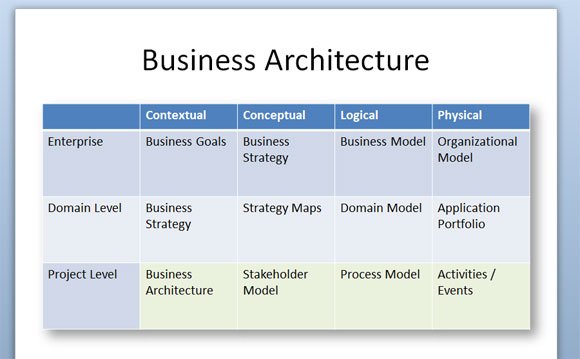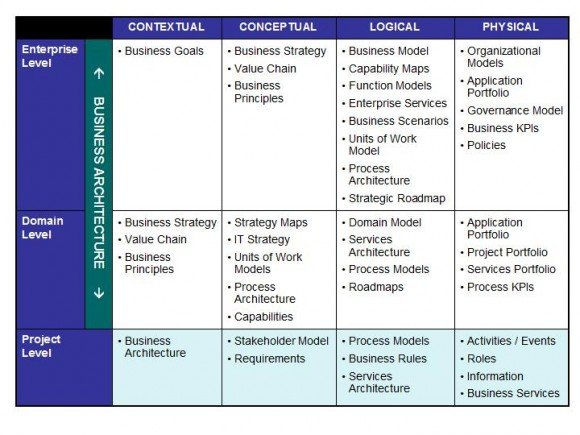Business Architecture Diagram for PowerPoint
Last updated on November 23rd, 2024
If you are a strategist, CEO or Business Architect and want to prepare nice business presentations then you may be interested to make PowerPoint presentations to describe your business architecture. A business layer in an organization can help to describe where elements related to people, processes and places are managed within an organization. You can make awesome diagrams in PowerPoint to model a Business Architecture. A Business Architecture can be divided in different views:
- A conceptual view where you can define the ‘what’. In business terms this means ‘what’ is the business, and will comprise things from the high level operating model, through the business domains and capabilities to the type of roles that will be required to run the business.
- Other views include the logical view in the Business Architecture. The logical view is where you can define the ‘how’. In business terms this is the lower level abstraction of ‘how’ the ‘what’ will be achieved and will consist of things such as the processes that will perform the capabilities defined in the conceptual level, as well as the roles that perform the process.
- Lastly, the physical view is the actual implementation or deployment. In business terms this provides additional detail such as where the logical processes take place and who – individuals or teams – will perform them.
Some managers and strategists may use another view named Contextual in the first place.
Business Architects may also consider another dimension while designing a diagram or chart to describe the business architecture and since PowerPoint is the popular tool for authoring presentations then you may want to learn how to make a business architecture table in PowerPoint. As proposed by Nevermind The Business, the author believe that there are at least 3 breeds who now claim to be Business Architects.
- The Enterprise Business Architect
- The Domain Business Architect
- The Project Business Architect a.k.a the Business Analyst
To make a business architecture design in PowerPoint you can insert a table with cells representing the different levels and dimensions. In this case we have used a simple table to model the Business Architecture.

As you can see, on the Project Level row we have added cells for Business Architecture, Stakeholder model, Process Model and another one for Activities and Events.
In the Business View of the Enterprise Architecture the focus is centered around a description of how an organisation works in terms of its business processes.
The Business Architecture Domain includes:
- Business Strategy. Typically includes the high-level Business Goals and Objectives and a document describing the Target Operating Model.
- Business Services. This describes the products and services an organisation offers and sells to its customers.
- Business Information. This describes the structure of the business information needed by each business processes and information created by business processes. Includes knowledge and meaning.
- Business Processes. This defines the business processes, organisation structure and roles that are required to define and operate an organisation.
- Business Events. This defines the triggering events received by the organisation to which it must respond, and the outgoing notification events that an organisation creates.
- Event Value Chains. This defines the flow and sequence of business processes/activities that are triggered by a business event and resulting in added value.
- Organisation Architecture. This defines the organisation structure, roles and responsibilities that are required in an organisation.
- Business Functions. This defines the functions and capabilities that are required within the organisation
- Organisation Services. This defines the services that are provided by people (as opposed to those provided by applications).
- Capabilities. This defines the functions, behaviours and services that may be provided by the organisation units (internal Actors and Business Roles)
To complete the table, you can refer to the link of Nevermind The Business. Here is an example.

